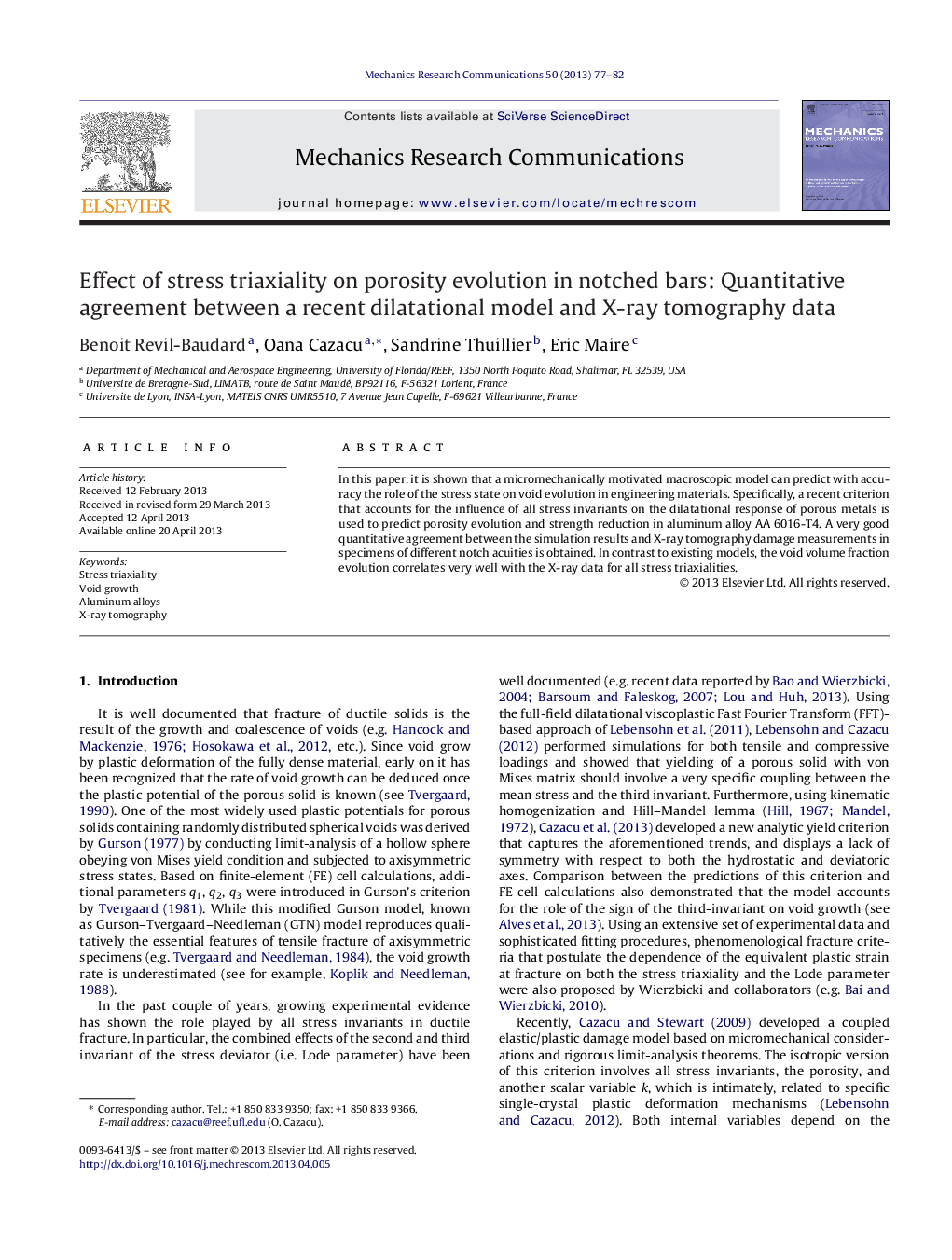| Article ID | Journal | Published Year | Pages | File Type |
|---|---|---|---|---|
| 801588 | Mechanics Research Communications | 2013 | 6 Pages |
•New criterion captures the effect of stress triaxiality on void growth.•Quantitative agreement between model and X-ray tomography data on an aluminum alloy.•Strength reduction predicted well.
In this paper, it is shown that a micromechanically motivated macroscopic model can predict with accuracy the role of the stress state on void evolution in engineering materials. Specifically, a recent criterion that accounts for the influence of all stress invariants on the dilatational response of porous metals is used to predict porosity evolution and strength reduction in aluminum alloy AA 6016-T4. A very good quantitative agreement between the simulation results and X-ray tomography damage measurements in specimens of different notch acuities is obtained. In contrast to existing models, the void volume fraction evolution correlates very well with the X-ray data for all stress triaxialities.
